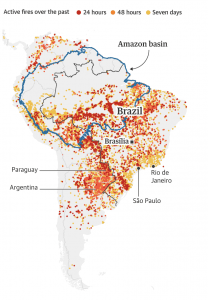The IB year starts in just a couple of days and I’ve never been so excited for school to start. For one of my HL subjects I have chosen Global Politics and as the schedule was just released today, I was encouraged to work harder for this subject.
To have a basic understanding of Global Politics and at least grasp the fundamental concepts, I started to read this book called, “Global Politics” by Andrew Heywood. At first, I was afraid that I wouldn’t be able to comprehend the concepts because they would be too complicated, but it turns out that the theories are quite simple which help me to relate these topics to real-life situations (such as Brexit and the South China Sea dispute).
Apparently, one of the most important things about studying Global Politics is understanding what the world ‘global’ really means. ‘Global’ could either mean that there is a worldwide significance or that it is comprehensive. When ‘global’ is understood in terms of worldwide significance, it suggests that politics must be conducted at a global level and focuses on the work of organisations such as the UN (United Nations) or WTO (World Trade Organization). Incidentally, when it comes to global worldwide significance, the focus is mostly on economic and environment based organisations. On the other hand, when ‘global’ is interpreted in terms of comprehensive, it implies that politics must refer to all the elements within a system (economic, political, social). So when ‘global’ is in terms of comprehensive, the term must reject the idea that the global level must include politics at the national or local level.
“How do ‘the global’ and ‘the international’ complement one another?”
Global politics is based on a comprehensive approach to world affairs that takes account not just of political developments at a global level, but at all levels, global, regional, national and so on. In that sense, ‘the global’ and ‘the international’ complement one another and should not be seen as rival or incompatible. ‘International’ politics has been modified into ‘global’ politics through a variety of developments that have taken place. It is the levels of interconnectedness and interdependence in world politics that have increased and the international disorder has been altered by regional and global governance.
What have been the implications of globalization for world politics?
Globalization is the development of a complex web of interconnectedness which means that our lives are increasingly shaped by events that occur and the decisions that are made globally\. Globalization itself has several different definitions from textbooks over time:
- ‘[T]he intensification of worldwide social relations that link distant localities in a way that local happenings are shaped by events occurring many miles away and vice versa’ (Giddens 1990)
- ‘A process (or set of processes) which embody the transformation of the spatial organization of social relations and transactions’ (Held et al. 1999)
- The processes through which sovereign nation-states are crisscrossed and undermined by transnational actors with varying prospects of power, orientations, identities and networks’ (Beck 2000)
- ‘The integration of national economies into the international economy through trade, direct foreign investment, short-term capital flows, international flows of workers and humanity generally, and flows of technology’ (Bhagwati 2004)
- ‘A reconfiguration of social geography marked by the growth of transplanetary and super territorial connections between people’ (Scholte 2005)
The differences in political decisions are commonly formed between economic globalization (the process through which national economies have, to a greater or lesser extent, been absorbed into a single global economy), cultural globalization (the process whereby information, commodities and images that have been produced in one part of the world enter into a global flow that tends to ‘flatten out’ cultural differences between nations, regions and individuals) and political globalization (the process through which policymaking responsibilities have been passed from national governments to international organizations). However, there are significant discussions about whether globalization is actually happening and how far it has transformed world politics.
How do mainstream approaches to global politics differ from critical approaches?
The two mainstream perspectives on global politics are realism and liberalism. These are both grounded in positivism and focus on the balance between conflict and cooperation in state relations, even though they offer quite different reports of this balance. Critical theories, in contrast, tend to adopt a post-positivist (accepting that theories, background, knowledge and values can influence what is observed) approach to theory and challenge the global status quo by aligning themselves with the interests of marginalized or oppressed groups. Realists generally place greater emphasis on conflict, while liberals highlight the scope for cooperation.
Realism is grounded in an emphasis on power politics (the assumption that the pursuit of power is the principal human goal), based on the following assumptions:
- Human nature is characterized by selfishness and greed.
- Politics is a domain of human activity structured by power and coercion.
- States are the key global actors.
- States prioritize self-interest and survival, prioritizing security above all else.
- States operate in a context of anarchy and thus rely on self-help.
- The global order is structured by the distribution of power (capabilities) among states.
- The balance of power is the principal means of ensuring stability and avoiding war.
- Ethical considerations are (and should be) irrelevant to the conduct of foreign policy
In contrast, liberalism is based ultimately, on a belief in human rationality and moral goodness so the principle of balance or harmony operates in all forms of social interaction. The liberal form of global politics is based on the following key assumptions:
- Human beings are rational and moral creatures.
- History is a progressive process, characterized by a growing prospect of international cooperation and peace.
- Mixed-actor models of global politics are more realistic than state-centric ones.
- Trade and economic interdependence make war less likely.
- International law helps to promote order and fosters rule-governed behaviour among states.
- Democracy is inherently peaceful, particularly in reducing the likelihood of war between democratic states.
However, critical perspectives of global politics try to go beyond the positivism of mainstream theory, emphasizing instead the role of consciousness in shaping social conduct and, therefore, world affairs. These so-called post-positivist theories are, therefore ‘critical’ in that they not only take issue with the conclusions of mainstream theory but also subject these theories themselves to critical scrutiny, exposing biases that operate within them and examining their implications.
How have the contours of world politics changed in recent years?
One of the ways the contours of world politics has changed is through the rise of Non-Government organizations which have emerged as important players and shapers in global politics. The trend of NGOs had officially begun with the United Nations (UN) in 1948 which is seen as the only true NGO of the world today. Since then, in recent years, there has been a rapid growth in the number of non-governmental organisations. For example, there are around 2 million NGOs in the United States, 65,000 in Russia and a newly developing country like Kenya has 24,000 NGOs.
As it has emerged, there are two types of NGOs in today’s world, operational and advocacy. Operational NGOs, primarily focus on design and implementation of development-related projects which could be community-based, global, national or international. In contrast, advocacy NGOs, aim to promote or defend a particular cause which is why they are also known as promotional pressure groups or public interest groups. It is better to be or support an operational NGO as they deliver about 15 per cent of international aid, demonstrating a greater speed of response and level of operational effectiveness than governments in contrast to advocative NGOs which gain help by forcing and pressuring societies and communities.
The rise of NGOs causes political controversy as NGO supporters believe that they enrich and benefit global politics as supporting NGOs help to widen peoples’ sense of civic responsibility. However, critics argue that NGOs attempt to gain a high media profile and attract support and funding, by making exaggerated claims thus distorting the public perception of the problems when they are not presented with precision.
How has global politics changed in recent years in relation to the issues of power, security and justice?
Power, security and justice are the three key aspects of politics. All forms of politics are about power as politics is sometimes seen as the study of power. Global power is becoming more fragmented and pluralized, through the role played by international organizations. Power is also demonstrated through the capacity of new technology to alter power balances both within society and between societies, often empowering the traditionally powerless. Power is also divided into two different kinds, ‘soft’ power which is power as an attraction and ‘hard’ power which is power as coercion. Thus, ‘soft’ power is used to influence others by persuading them to follow or agree to norms and aspirations, as opposed to using threats or rewards.
Security is the deepest and most abiding issue in politics. Security has usually been thought of as a particularly pressing issue in international politics because, while the domestic realm is ordered and stable, by virtue of the existence of a sovereign state, the international realm is anarchical and therefore threatening and unstable. ‘National’ security is most focused on as each state must have the capacity for self-defence. This allows countries to have military power, which reflects the assumption that the more militarily powerful a state is, the more secure it is likely to be. However, this only problem this can spark is that military expansion for defensive purposes by one state may be inclined to be potentially or actually aggressive by other states which could lead to other states mobilising.
Justice has viewed justice as a largely irrelevant issue in international or global politics. This is due to liberals, who insist that international politics and morality should go hand in hand to prevent conflict and violence. Thus mostly focusing on national independence and political freedom. These views from liberalists come from the idea of global justice which is rooted in the belief of universal moral values which apply to all people in the world regardless of nationality and citizenship.
Although this is just the beginning, I am thrilled to study more on these topics at school! Personally, I’m excited to read further about terrorism and learning its significance and countering it as well as global environmental issues as I would like to see how global politics and the economy could affect climate change.

















